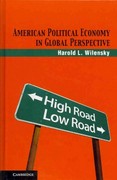Question
Suppose the agent is on a game show where she has to pick one of 3 boxes labelled A, B, C. The grand prize has
Suppose the agent is on a game show where she has to pick one of 3 boxes labelled A, B, C. The grand prize has been placed in one of the boxes randomly. If she selects the correct box, she wins. Otherwise she leaves empty handed. The agent's uncertainty is captured by a state space S = {A, B, C} where s ? S is the state of the world where box s contains the grand prize. Assume that the agent's prior is uniform (that is, it places probability 1 3 on each state of the world), and suppose the agent has picked box A. Suppose that the game show host tells the agent "Wait a minute, there's some news for you: the prize is not in box C. Would you like to stay with box A or pick a different box?". Most people would be indifferent between box A and box B at this point, thinking that the odds are 50-50 that the prize is in A or B. Much to the surprise of most people (including academics), that intuition is wrong mathematically:1 the Bayesian posterior probability that box B contains the prize is strictly higher than box A containing it. (It is entertaining to read up on people's reaction to this so-called "Monty Hall problem"). In this problem you are asked to determine the Bayesian posterior probabilities, using the tools we introduced in class. [Warning: feel free to read up on the Monty Hall problem and the suggested solutions online, but you are asked to solve the problem using only the tools introduced in class, and you will not find the required form of the answer in the majority of articles you see online]. (a) Model the game show host's news as a Blackwell experiment. Specifically, for each state s ? S, write the possible news as a distribution over messages (where the possible messages are "the prize is not in A", "the prize is not in B" and "the prize is not in C"). Your answer should constitute no more than a table of the form we used to represent Blackwell experiments in class (see the lecture notes). (b) Compute the Bayesian posterior probabilities over S





Step by Step Solution
There are 3 Steps involved in it
Step: 1

Get Instant Access to Expert-Tailored Solutions
See step-by-step solutions with expert insights and AI powered tools for academic success
Step: 2

Step: 3

Ace Your Homework with AI
Get the answers you need in no time with our AI-driven, step-by-step assistance
Get Started


